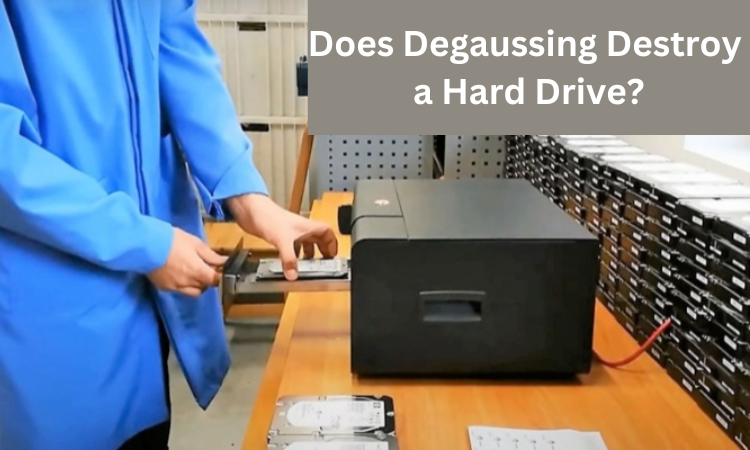Destruction of old hard drives can be a problem. It will continue to accumulate and appear to be thrown out, but another question pops up, is the data really gone? Data security is critical, more so when it has to do with sensitive information.
Degaussing, a process that includes strong magnetic fields, is normally put across as a sure way through which data on hard drives is deleted. However, does degaussing destroy the hard drive or simply clear the information off of it?
Let us delve into the world of data storage and degaussing, and find out precisely how this technology works and what it means for your hard drive.
How Hard Drives Store Data?
Traditional hard drives store data in a magnetic way. The surface of the disk platter is covered with a magnetic material. Normally, the tiny magnetic domains point in one of the directions that represent 0s and 1s that compose the digital information.
What is Degaussing?
Degaussing just subjects the hard drive to a very powerful, rapidly pulsing magnetic field. What this does is disrupt the already magnetic alignment of domains on the platter, hence scrambled data that is unreadable.
Does Degaussing Completely Erase Data?
Degaussing is a really effective process of data destruction for older hard drives. When properly done, degaussing with a degausser powerful enough will render data recoverability almost impossible. Nevertheless, some limitations have to be considered:
- Strength of the Degausser: Degaussers are made for different strengths. To ensure complete erasure of data, the strength of the magnetic field from the degausser has to be at least twice that of the hard drive itself.
- Multiple Degaussing Cycles: For maximum security, some recommend running the degaussing process multiple times.
- Solid-State Drive: Degaussing doesn’t work on SSDs, which use flash memory and are not magnetic. Securely erasing an SSD typically involves software-based methods or physical destruction.
Pros and Cons of Degaussing
Pros:
- Quick and Simple: Degaussing is a pretty fast process, hence effective for mass destruction of data.
- Secure and Environment Friendly: Since degaussing does not evolve physical destruction, a hard drive remains intact and hence can be potentially reused.
Cons:
- Operable on Magnetic Hard Drives Only: Degaussing only works on magnetic hard drives, so it does not work on Solid State Drives.
- Strength Requirements: The strength of degaussing is determined by how powerful the degausser is with the hard drive.
- Multiple Cycles needed: To achieve the best level of security, a hard drive may have to be degaussed a multiple number of times.
- Not Foolproof: Because degaussing is not resistant to the most advanced data recovery methods in some circumstances, cannot be tagged as completely efficient.
Degaussing vs. Physical Destruction
Whereas degaussing is a sure technique, some organizations prefer physical destruction especially when it involves highly sensitive data. This can be done through shredding, crushing, or drilling of the hard drive to effectively eliminate all data. Combining degaussing with physical destruction offers very high-security data disposal with a clear conscience.
Best Way to Wipe a Hard Disk Without Destruction
In case one desires to delete data from a hard drive without physical destruction, then SysTools Data Erasure software would be the ideal solution. This mighty, software-based data-wiping tool independently provides a very convenient and secure way to erase data from a hard drive without its physical destruction. The programs overwrite the existing data on the drive with random patterns, hence making it virtually impossible to recover the original information. This software is user-friendly, with highly complex algorithms for wiping data and supporting a wide variety of standards such as NIST 800-88, ISO/IEC 27701, DoD 5220.22-m, and others.
Conclusion
Degaussing is a fast way to wipe traditional hard drives, but strength and multiple passes count; this won’t work on SSDs, and it’s not foolproof. Shredding or crushing is very useful, especially in highly sensitive areas of information. But, for secure erasure without destruction, data-erasing software does the trick.
